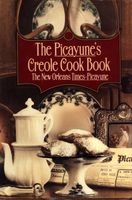Advertisement
Creole Candies
Bonbons et Sucreries Creoles

Creole candies occupy a unique position among confections in the United States, and it has often been said that the old French Quarter could apply for a patent for its delicious Pacanes a la Creme, Amandes Pralines, Praline Rose, Praline Blanc, Pistaches Pralinees, La Colle, Mais Tactac, Dragees, Guimauues, Pastilles, Nougats and other exclusive products of the Creole cuisine. The Picayune uses the term “exclusive” advisedly, especially in the use of the word Praline, for while the term Praline is not of Creole origin, being a common enough word in the vocabulary of the French nation, with the mother country of Louisiana it simply means “sugared, ” and has no reference whatever to the delightful confections that had their origin in the old Creole homes of New Orleans. There is, indeed, a traditional recipe of the great Viart, Homme de Bouche, as he called himself, who tickled the palate of Charles X, in the jocund days of the Bourbon restoration, and another old tradition that the Praline was a species of Dragee, which derived its name from the Marechal de Plessin-Pralin, who was very fond of almonds, and whose butler one day advised him to have them coated with sugar, to avoid indigestion. Again, there is an old French rhyme of Gresset’s, which has become incorporated in the banquette games of little Creole children of New Orleans, and which runs thus:

